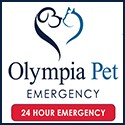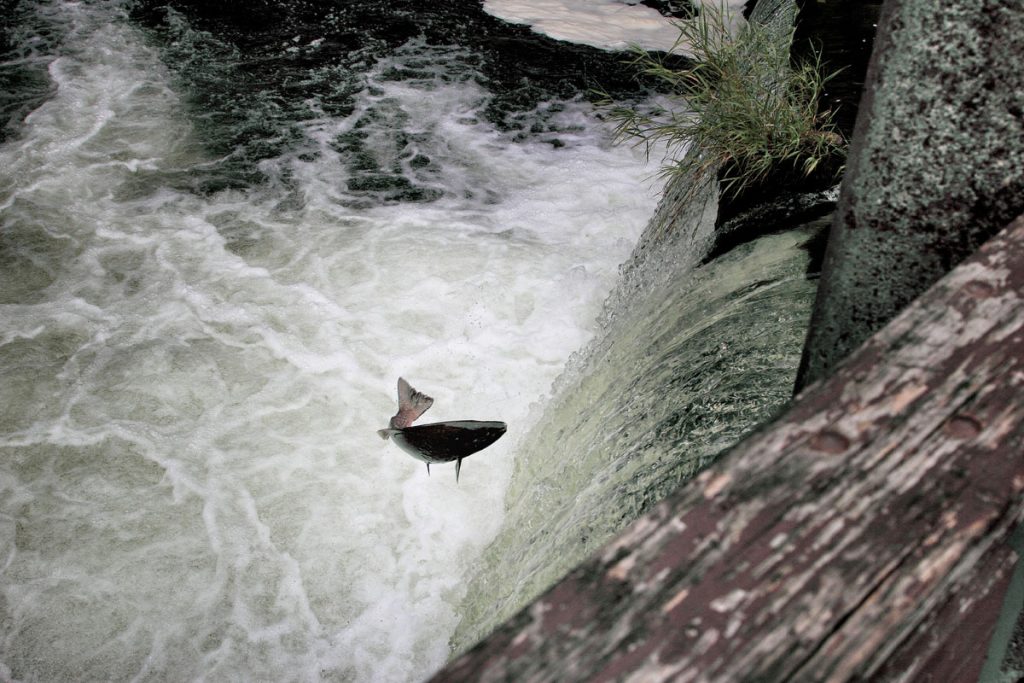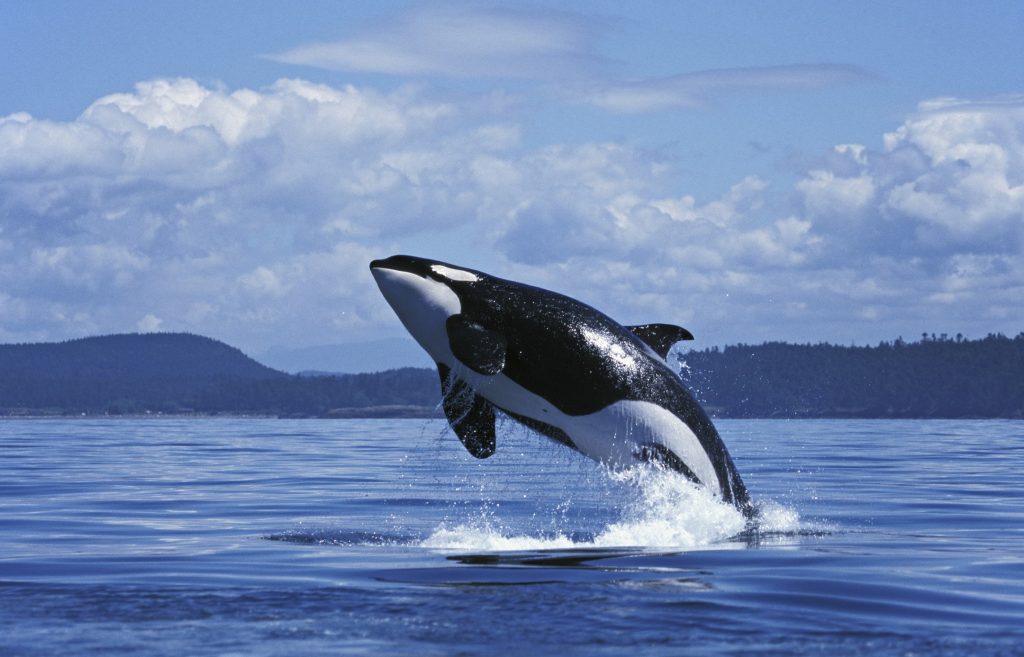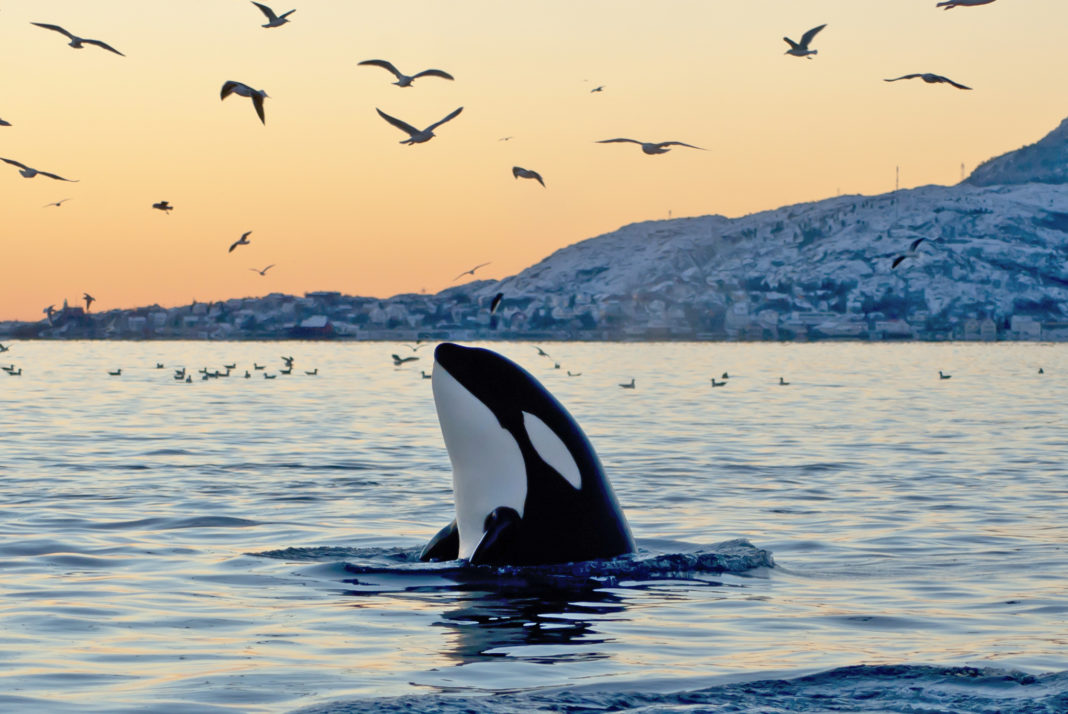Witnessing an orca do a full breach, fluking as it disappears back into the ocean takes your breath away. Thurston County residents are fortunate enough to live on the coast of the Puget Sound, where three pods of orca come through each year. But their number is smaller than it should be, which is why June is Orca Action Month – formerly Orca Awareness Month – with events taking place throughout Washington, Oregon and British Columbia.

Rosemary Connelli, designer at Orca Month, shares that the goal of creating a month dedicated to orcas is to raise awareness about the threats facing critically endangered Southern Resident orcas, educate the public on what we can all do to protect them and build a community to celebrate these magnificent animals. This is done through a series of events.
Why Orca Month is Important to Thurston County
It seems like there are photos of orcas everywhere in Thurston County. Social media posts of sightings during their migration season may make it seem like there are quite a few orcas in our area. But that’s not the case. “Despite the popularity and visibility of orcas in our region – see all the merch out there! – the average member of the public is unaware that there are different types of killer whales, and that Southern Resident orcas, a distinct population native to our coastline, are critically endangered,” explains Kathleen Callaghy, Northwest Program representative of Defenders of Wildlife. “There are currently only 74 whales remaining in this population – close to their lowest population on record (71). Despite all efforts to date to preserve them, researchers currently predict that the Southern Residents will go extinct in as few as 50 years if things remain the same as they are now.”
What makes a southern resident orca – or killer whale – different from other orcas? Aside from where they live – off the coast of Northern California, Oregon, Washington and British Columbia – these orcas live mainly off salmon, not marine mammals. They travel in large groups – called pods – and have older females as their leaders.

Since their main food diet is salmon, you can see how dwindling salmon populations in our area are a real threat to our southern resident orcas. Part of Orca Action Month is centered on how we can help increase their current food source. “Orca Action Month is critical to keeping the public informed about the urgency of saving the southern residents and the salmon they rely on, educate about the threats to their survival – e.g. salmon decline, toxic contaminants, noise disturbance – and engage in efforts to mitigate those threats,” shares Callaghy.
Chinook salmon and southern resident orcas are irrevocably linked. If one goes, so does the other. And, unfortunately, the Puget Sound Chinook salmon are in a state of crisis, according to the Washington State Governor’s Salmon Recovery Office. Callaghy explains that the number of salmon currently in our waters is not enough to support our orcas, and there have already been losses due to it. “Prey scarcity is the single greatest threat to the southern residents’ survival,” shares Callaghy. “Losses among J, K, and L pods have been tightly correlated with coastwide drops in Chinook numbers. The whales are functionally starving, and this is extremely detrimental to their health, resilience, and ability to reproduce. A 2017 study linked the southern residents’ 69% miscarriage rate with nutritional stress.”

2024 Orca Month Events Near Olympia
Since 2006, the Orca Salmon Alliance team has done many projects to help our southern resident orcas. Examples of some of the past projects include film screenings; talks, presentations and workshops; beach clean-ups; kayak tours and more. They attend the Tacoma Ocean Fest and do a Puget Plunge/Salish Splash, where people jump into the water like a Polar Bear Plunge in celebration of campaign victories. They partner with fishery enhancement groups, libraries, state and federal agencies, science centers, business and non-governmental organizations.
The theme for 2024’s Orca Action Month is “Clean Water, Healthy Future.” “Toxic pollution and contaminants in the environment are one of the three threats facing orcas,” shares Connelli. “It comes from untreated stormwater pollution, industrial discharges, and legacy sources from decades ago that are still persistent in the environment. Event participants will learn about toxic substances threatening orcas, salmon, and people alike and will be empowered to take actions promoting healthier futures for all.”
All are invited to participate in the many Orca Action Month events, starting with the opening webinar on May 29, 2024. This free event runs from 5:30 p.m. to 6:30 p.m. Other events hosted by the Orca Salmon Alliance include the Tribute to the Orca at the Seattle Aquarium June 12, and the Orca Month Culminating Event, at Westlake Park in Seattle June 27. Other organizations have dozens more events throughout June to raise awareness and help our southern resident orcas. Find them all on the Orca Month website.
Want to get involved? Callaghy says you can host an orca-themed or toxic-themed event during the month of June. Distribute Orca Month materials – brochures, flyers, postcards – in your area and promote #OrcaMonth on social media. If you are interested in participating in Orca Month beyond attending a single event, please fill out their interest form. Learn more on the Orca Month website and follow on Facebook.




















































